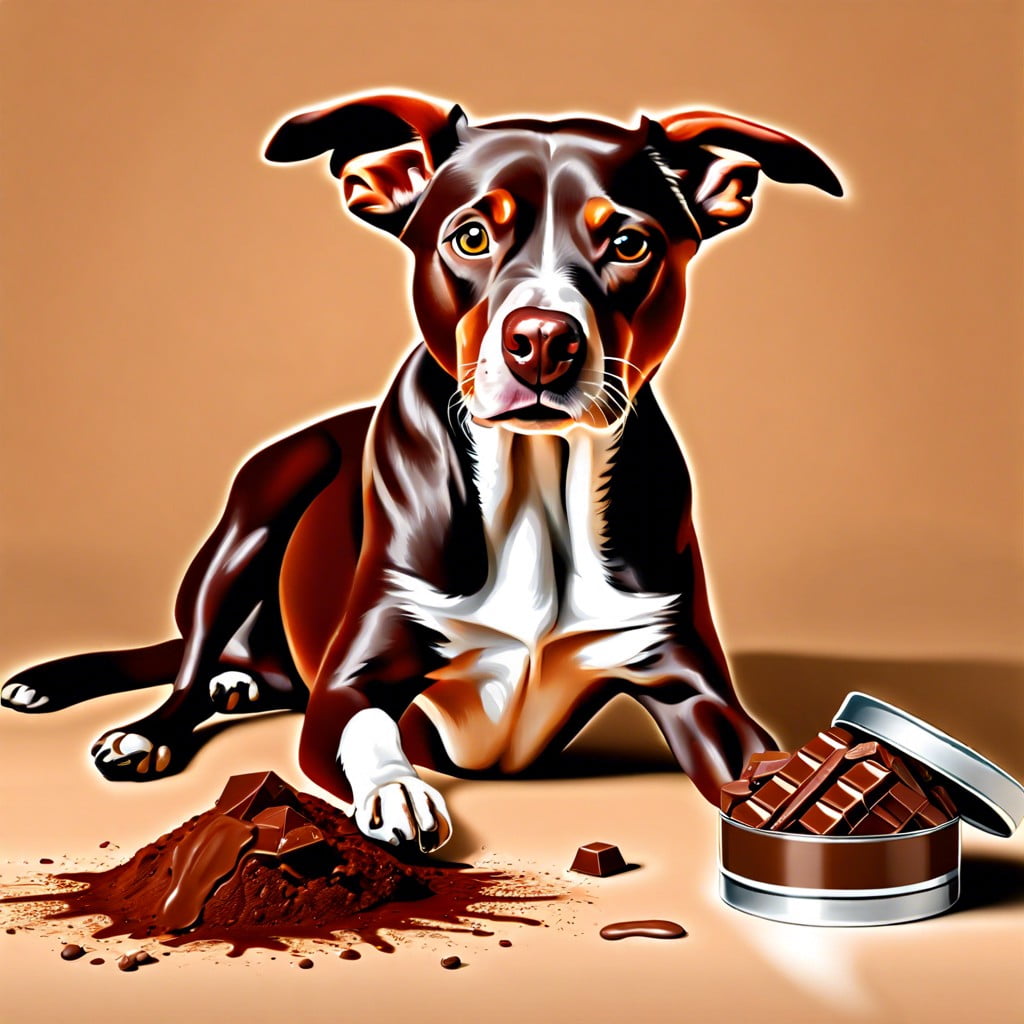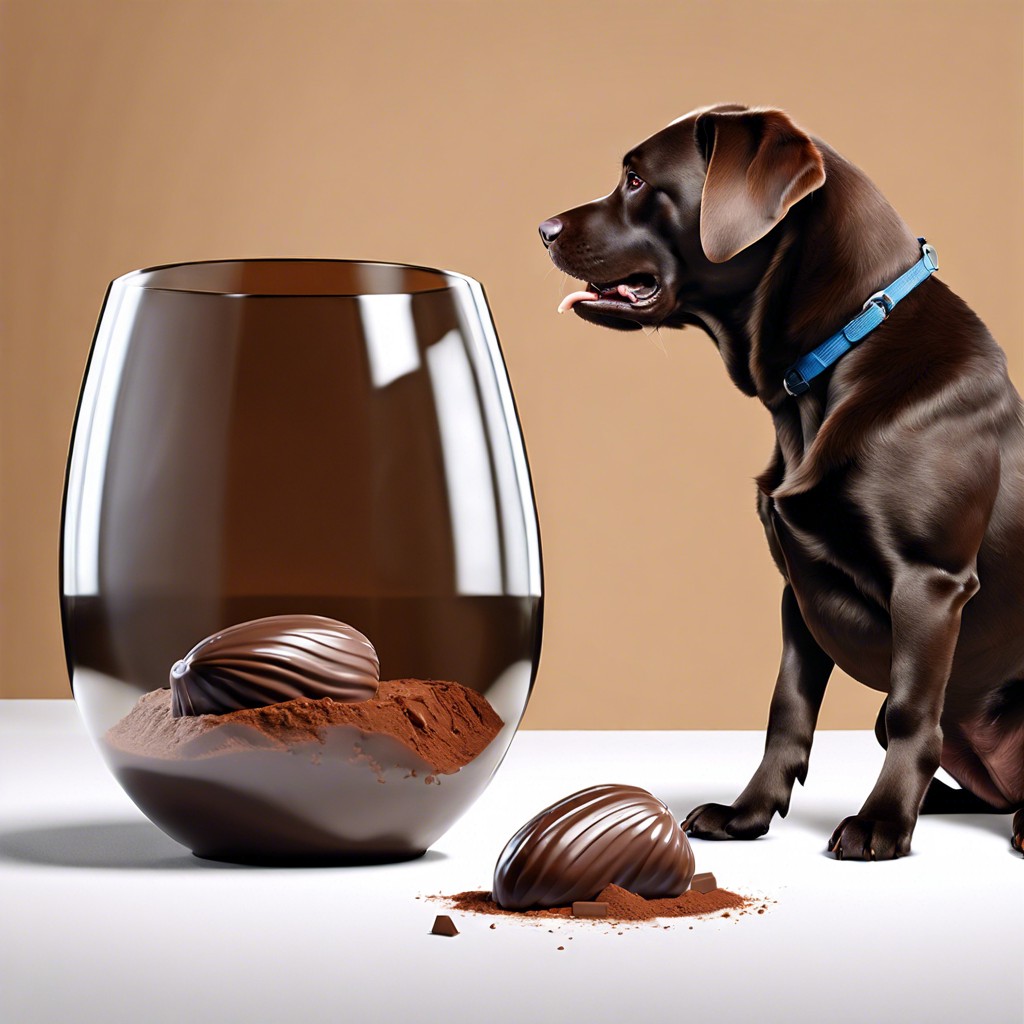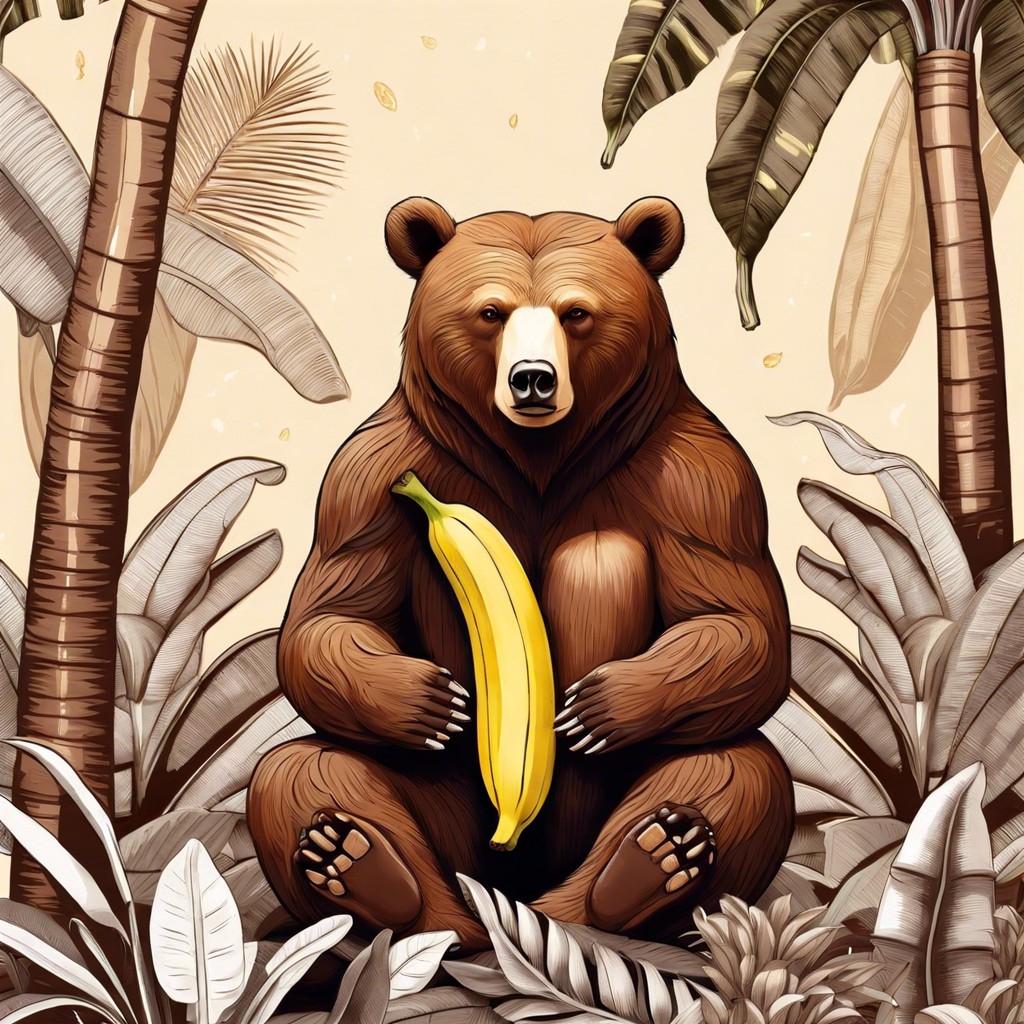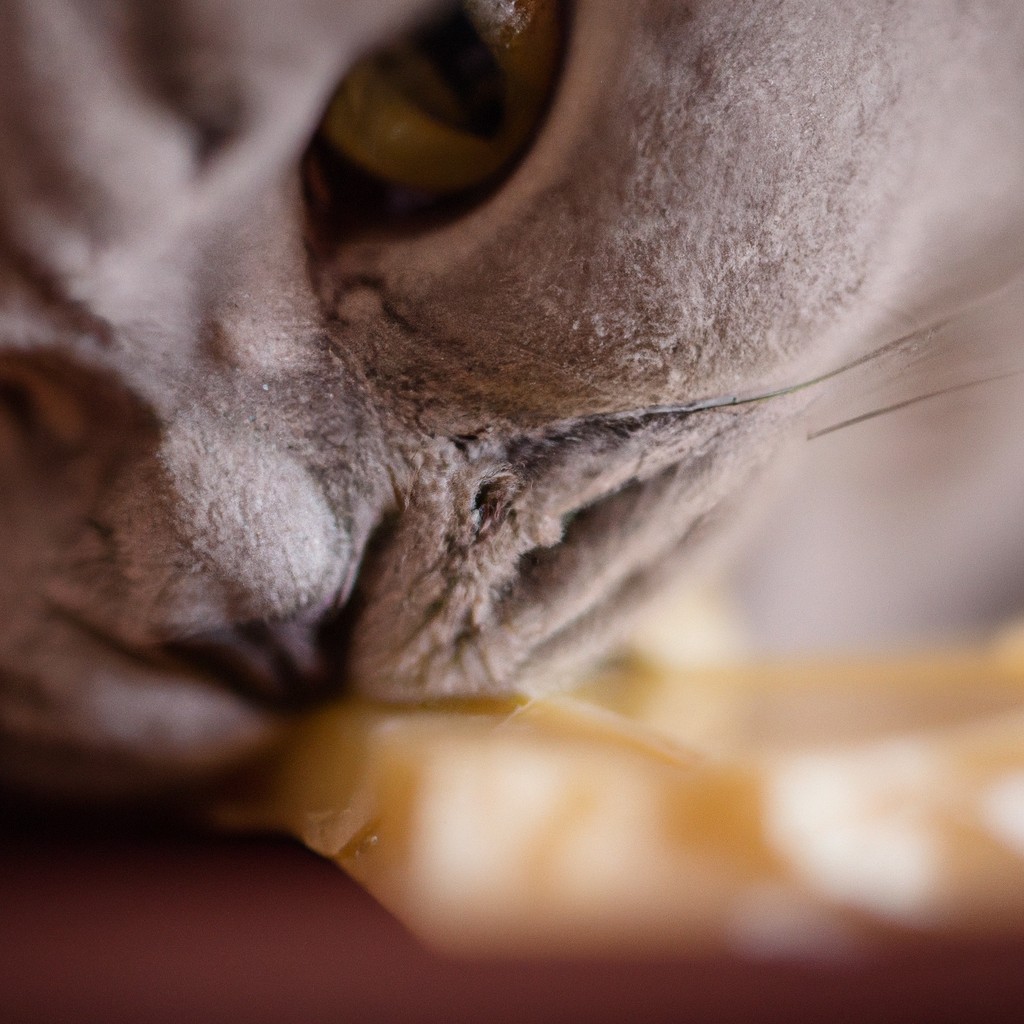No, deer should not eat chocolate as it can be harmful to them.
Deer, despite their diverse diet, should not consume chocolate. The theobromine found in chocolate is toxic to many animals, including deer. Ingesting chocolate can lead to serious health complications in deer, such as digestive distress, increased heart rate, and in severe cases, it can be fatal.
This article will provide a comprehensive understanding of why chocolate is harmful to deer and delve into the specifics of deer dietary needs and restrictions. It’s essential to be informed about these matters to ensure the wellbeing of these beautiful creatures.
Key takeaways:
- Deer should not eat chocolate, as it can be harmful.
- Theobromine in chocolate is toxic to many animals, including deer.
- Theobromine affects animals differently than humans, causing serious health complications.
- Carbohydrates, like those in chocolate, are not suitable for a deer’s digestive system.
- Deer have specific dietary needs and prefer natural plant-based foods.
Inside
What Is Theobromine?
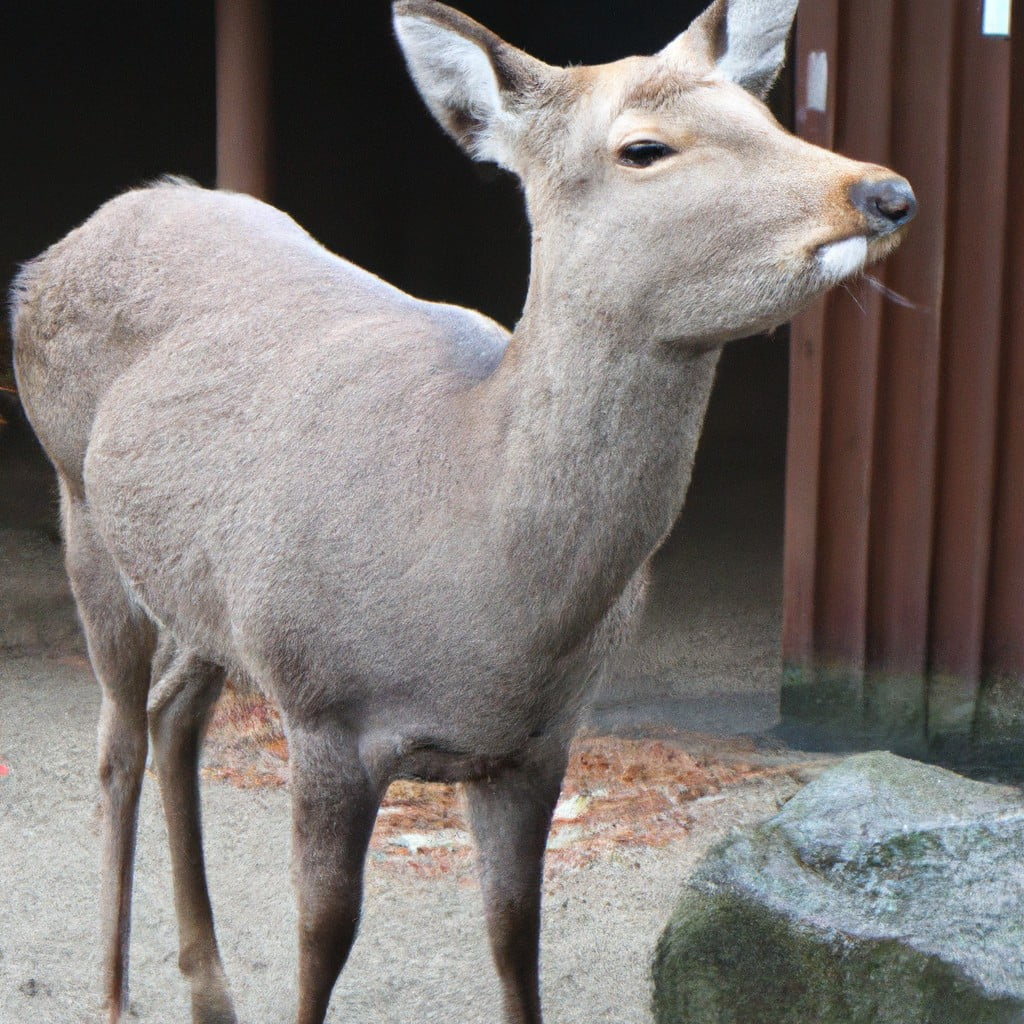
Theobromine, an alkaloid of the cacao plant, is an essential component in chocolate. Sharing some similarities to caffeine, it stimulates the central nervous system and cardiovascular system, and promotes diuresis. Found mainly in products like chocolates, teas, and some medicinal products, theobromine has a bitter taste, a trait which its name reflects as it translates to “Food of the gods.”
While beneficial to human beings, it’s important to remember that theobromine affects animals differently. Animals metabolize theobromine slower than humans, causing harmful side effects which can escalate to severe conditions or even death. This is the primary reason why pets, wildlife, and other animals must not consume chocolate or any product containing theobromine. Consequently, monitoring what animals consume is pivotal, preventing accidental intake of the harmful substance.
Why Is Chocolate Bad for Animals?
The main culprit behind chocolate’s toxicity for animals lies in a compound it contains called theobromine. This alkaloid, a relative of caffeine, has a higher concentration in darker chocolate, and it’s particularly harmful, and potentially lethal, to a host of animals, not just deer.
Theobromine is absorbed and metabolized more slowly in animals than in humans, resulting in a build-up that their bodies quite literally don’t know how to handle. Adverse effects include:
- Stomach upset: Gastric disturbances, such as vomiting and diarrhea, are common and can lead to severe dehydration.
- Neurological issues: Theobromine affects the central nervous system causing symptoms like restlessness, tremors, and even seizures.
- Cardiovascular problems: Rapid or irregular heart rates may occur, which can escalate to fatal levels in some cases.
- Theobromine poisoning: In severe cases, it can lead to internal bleeding, heart attacks, and ultimately death.
Remember it’s not only the ingestion of a large amount of chocolate but persistent smaller doses that can also cause these problems. It’s always better to err on the side of caution and keep all chocolate out of reach of animals. If accidental ingestion does happen, seek immediate veterinary attention.
Carbs Are Bad for Deer
Carbohydrates, particularly those found in highly processed foods like bread and chocolate, are not suitable for a deer’s digestive system. Their stomachs are designed to handle a diet rich in fibrous plant material, not concentrated sources of carbohydrates. High-carb diets can lead to obesity and other health problems in deer.
- Consumption of carbohydrates can interfere with their digestive system.
- It can cause bloating and discomfort.
- High-carb diet may result in obesity.
- Obesity can affect a deer’s mobility, making it difficult for them to escape predators.
- Excessive intake may lead to fatal diseases.
- Crucial to maintain their natural diet to uphold their overall health.
Hence, always ensure that the kind of food being offered to deer is in alignment with their unique dietary needs and biological characteristics.
What Food Attracts Deer the Most?
Deer are quite fond of certain types of food. Their preferred meals include:
- Fruits: Apples and berries are highly favored due to their sweet taste.
- Acorns: Rich in fats and nutrition, acorns act as a primary food source for deer in the autumn.
- Soybeans: Nutrient-dense and easily digestible, soybeans are a preferred food for deer especially in the summer and early Fall.
- Clover: This perennial plant is a top choice for deer. With its high protein content, it plays a crucial part in enhancing a deer’s overall health.
- Alfalfa: Often found in deer feed mixtures, Alfalfa is liked for its nutritious content.
Choose these foods while attempting to attract deer to the yard, and always ensure the foods are fresh, as deer are adept at detecting rotten food. Avoid human food scraps as these can harm the deer’s health. Instead, focus on natural sources of nutrition that align with a deer’s typical forest diet.
What Does A Deer Like To Eat?
A deer’s diet majorly consists of plant-based foods, including leaves, twigs, grasses, berries, and fruits. Their fondness for these items varies based on the geographical region. For instance, those dwelling in northern climates primarily consume tree resins and conifers during winter, while those in areas with warmer climates may enjoy a more diverse food base.
An interesting aspect of their nutrition is their adaptation to changing seasons. In the Spring, deer munch on tender grasses and succulent new growth of trees and shrubs. Summer offers an assortment of flowers, weeds, and garden vegetables. When Fall approaches, deer shift their eating habits to prepare for winter and consume more nuts, fruits, corn, and acorns.
When feeding deer, it’s important to remember some staples of their diet, such as the inclusion of native trees and bushes that provide leaves and twigs. Certain plants, like clover, alfalfa, beans, wheat, and rye, also hold a special place in their consumable list. Always respect regional restrictions regarding feeding of deer to ensure you’re not unintentionally causing harm.
Providing deer with food during harsh winters might seem helpful, but it’s crucial to understand the delicacy of their digestive system. Digestive complications can occur if deer are fed food they aren’t adapted to, especially in large quantities. Offering access to fresh, unfrozen water during cold months, however, is always beneficial and greatly appreciated by these woodland creatures.
Feeding deer can also be a stark contrast to luring them to hunt. That’s why offering natural plantings that grow within their habitat can be more beneficial than providing store-bought feed, which can potentially harm their foraging habit and overall health.
Remember, deer are quite versatile in their eating habits and will readily adjust to what’s available. However, their preferences lean toward natural, plant-based food sources.
How Can You Feed Deer?
To ensure a deer-friendly diet, maintaining the natural eating patterns of these animals is key. This involves a diet primarily composed of natural food sources like leaves, twigs, fruits, nuts, and corn. If adding supplemental food, it should be done cautiously to avoid upsetting the deer’s digestion.
Offer diverse food options. Deer diet varies significantly depending on the season. In summers, provide more fruits and greenery, whereas autumn calls for acorns and corn.
Pre-made mixtures, available commercially, may come in handy. They are designed to provide a nutritional balance, which is essential for deer’s health. However, make sure they do not contain chocolate or any other harmful ingredients.
Refuse the concept of heavily relying on maize. Though cheap and plentiful, a maize diet can lead to digestion problems in deer, as their systems are not adapted to digesting a high carbohydrate diet.
Incorporate tree branches, often ignored when feeding deer. They are a natural food source and can prove quite beneficial in enhancing their overall health.
Remember, any dietary shift should be introduced gradually. Abrupt changes in diet may cause deer to suffer from acute indigestion which could prove fatal.
Begin Introducing the Diet Gradually
Introducing a new diet to deer should be a slow and measured process, ideally spread over a few weeks. It’s beneficial to start with a small amount, gradually increasing it over time. As deer have a sensitive digestive system, sudden changes to their diet can cause harm.
Firstly, ensure that the food source is in a quiet, undisturbed area where deer are likely to feel secure. This could be within viewing distance of a tree line or near a water source.
Next, keeping the food diverse is important. Just like humans, deer need a varied diet for proper nutrition. Incorporate a variety of foods such as apples, oats, and other natural vegetation into their feeding.
A useful tip to remember is to consistently replenish the food source- once the deer get accustomed to a certain area having food, they will return to it. Letting the site run out could discourage them from returning.
Lastly, be respectful of the natural instincts and habits of deer. Feeding should not interfere with the animal’s normal behavior. It’s ideal to keep human presence and interference to a minimum.
These steps, when conducted with care, can lead to an effective and gradual introduction of a new diet to deer.
Purchase Pre-made Mixtures
Selecting nutrient-rich pre-prepared mixes can aid in feeding deer in a safe and balanced manner. These mixtures often comprise vital proteins, vitamins, and minerals that deer require for optimal health. However, it’s essential to avoid mixes with high corn content as it may lead to digestive issues in deer.
When purchasing, it’s advised to look for mixes that contain a variety of grains such as oats, barley, and wheat along with some clover, alfalfa, or soybeans. These components offer the right blend of carbohydrates and proteins. Additionally, certain mixes may contain helpful additives like probiotics that support a healthful deer gut biome.
To ensure the well-being of the deer, choosing a deer-friendly location for feeding is crucial. An open area close to sheltering woods would make them feel more secure whereas an area that’s too enclosed might make them feel trapped.
Finding the correct feeding equipment is equally important. A trough feeder can make the food accessible for the deer and keep it off the ground, maintaining its cleanliness.
Remember, gradual introduction of these pre-made mixtures is key, beginning with small quantities and increasing over time. This allows the deer to adjust to the new food and monitors any negative reactions.
In selecting, setting up, monitoring, and regulating the food for deer with pre-made mixtures, it’s possible to support their nutrition without causing harm.
Abstain From the Maize Diet!
While corn, or maize, is a common foodstuff for humans, its nutritional content is not appropriate for deer. The high carbohydrate levels pose a risk to their digestive systems which are not designed to process such energy-rich food. Instead, deer typically consume food that is high in fiber but has low energy density.
Ingesting corn could lead to a quick surge of energy, but it can also lead to abrupt changes in the microbial populations in the deer’s stomach. This imbalance in the animal’s gut can actually be lethal as it may lead to bloating, acidosis and even death.
Instead of providing deer with maize, consider the following steps:
First, focus on natural vegetation within the deer’s environment. These creatures are designed to eat a variety of plant material ranging from leaves, twigs, fruits, and nuts, all of which provide a balanced diet.
Alternatively, when using supplementary feed, be sure to pick feeds high in fiber. Pre-made mixtures specifically designed for deer are the safest bet as they contain the right balance of nutrients and fiber.
Finally, when introducing any new food into a deer’s diet, always integrate it gradually. A sudden change can disrupt their digestive system, which, in sensitive animals like deer, could lead to detrimental health effects. Proper care and consideration should always be exercised when feeding such delicate creatures.
Tree Branches Are Useful
Deer are natural browsers, meaning they typically get their sustenance from high-growing vegetation. Subsequently, tree branches serve as a primary source of food. Particularly, woody plants and twigs provide essential nutrients that are beneficial for their health. Because of its availability year-round, it remains a consistent part of their diet across all seasons.
When making use of tree branches as a feeding option:
- Ensure the branches are within reach of the deer, generally lower than six feet.
- Try to provide a variety of tree branch types, as different species offer diverse nutritional content.
- Fresh branches are preferred over dry or wilted ones because of their higher nutrient levels.
- Always check that the plant species you are offering is safe for deer to consume.
Remember, incorporating tree branches into a deer’s diet not only aligns with their nutritional requirements but also helps to mimic their natural eating habits.
What Do Deer Eat Seasonally?
In the spring, deer forage for fresh, nutritious greenery, favouring shoots, leaves, and flowering plants. When summer arrives, their selection expands to include fruits and grains that have matured over the season, such as berries, acorns, apples, and corn. With the onset of autumn, a deer’s diet is dominated by nuts and fruits which provide ample energy to prepare for the harsh winter.
Throughout the winter months, deer must rely on their fat reserves and any available woody plants, tree bark, and buds for sustenance. It’s worth noting that the changing understory in native groves can provide a year-round dietary source. If living close to human habitats, they might take advantage of any available garden produce or ornamental plants. Remember, diet compositions differ based on the deer’s geographical location, and what’s stated above is just the general pattern.
How Can I Attract A Deer?
Attracting a deer involves careful planning and understanding of their natural eating habits.
Firstly, planting local vegetation that deer typically feed on, such as grasses, acorns, fruits, and berries, can lure them in. Make sure you provide an ample supply of their natural food sources rather than feeding them man-made food.
Secondly, creating a natural habitat will draw deer to your vicinity. This incorporates providing areas of cover, like patches of trees or bushes, where deer can feel secure.
Thirdly, providing a water source can aid in attraction as deer require fresh water daily.
Lastly, keeping the area quiet and undisturbed helps, deer are naturally skittish animals, any loud noises and sudden movements will discourage them from visiting.
Remember, attracting deer should be done responsibly. Be aware that feeding deer can disrupt their natural feeding habits and may lead to the spread of disease. Always follow local wildlife regulations.
What Is The Diet Of A Fawn?
A fawn’s diet initially relies heavily on the doe’s milk, which provides necessary nutrients for growth during the early stages of life. As they age, they begin to nibble on grass to familiarize their digestive systems with these new food sources. Simultaneously, they also consume the leaves of woody plants when possible.
After the three first months, fawns will begin to shift their diet more towards plant-based foods. They have a penchant for munching on clover, young tree shoots, and forbs. Fresh, green foliage is relished as it proves to be a significant source of protein for their growth and development.
As the fawn grows into late adolescence, acorns and other nuts become an important part of their diet. They provide necessary fats and carbohydrates, especially during the fall when food becomes scarce. But, their digestive system is not as equipped as adult deer to process these, making them a supplemental part of their diet, not the main one.
Farm crops including corn and soybean are also attractive to them, although these aren’t the most nutritional choices. It’s important to note that human food, especially sweets, should generally not be fed to deer as they can upset their stomach and cause health issues.
What Kind of Sweets Does Deer Like?
While it’s essential to remember that wild deer should primarily eat natural, forest-based foods, there are instances where they might be tempted by certain sweet items. Apples and pears fall in this category due to their natural sweetness, which is attractive to deer. Both these fruits also provide the necessary nutrients. Sweet corn is another food that deer seem to relish. They find the high sugar content quite yummy.
As a rule, avoid feeding deer human foods, particularly candy or pastry items. These contain a high sugar content, artificial sweeteners, and other additives that can disrupt the dietary balance of deer and other wildlife.
When choosing to supplement a deer’s diet, it’s always best to revert to natural food resources like clover, one of their favorites because of its beneficial properties. Alfalfa is another salubrious choice, with its high protein content aiding deer growth and health.
It’s essential to remember these food options should be supplementary to their natural woodland diet. Unnatural concentrates of any food can lead to health issues for deer, including harmful weight gain and diseases.
In conclusion, while deer may like sweeter foods, it’s crucial for their well-being to keep their diet as natural as possible.
FAQ
Can any wild animals eat chocolate?
Yes, certain wild animals, like rats and mice, can eat chocolate as they can metabolize theobromine as efficiently as humans, but overconsumption could still be harmful.
What foods are toxic to deer?
Onion, leek, and garlic from the Allium family are toxic to deer, potentially causing anemia, bloating, and diarrhea.
Can deer have dark chocolate?
No, deer should not have dark chocolate as they cannot metabolize theobromine found in it, potentially leading to toxicity or fatality.
What animals should not eat chocolate?
Dogs, cats, pigs, poultry, and ferrets are among the animals that should not eat chocolate due to the risk of chocolate toxicity.
Do different types of chocolate affect deer differently?
Deer can be negatively affected by all types of chocolate due to the substance theobromine, which they cannot metabolize efficiently.
What are the immediate effects of chocolate consumption on deer?
Chocolate consumption can be toxic to deer, potentially leading to rapid heart rate, seizures, and even death.
Can consumption of chocolate lead to long-term health issues in deer?
Yes, consumption of chocolate can lead to long-term health issues in deer due to the presence of theobromine which they cannot metabolize effectively.
